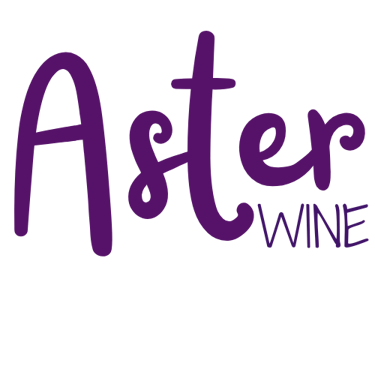PIWIs - What's next?
From tradition to innovation: how piwi grapes are redefining sustainable viticulture by reducing fungicide use, expanding wine regions, and offering a climate-resilient future for winemakers across europe and the world.


As sustainability becomes a central concern in global agriculture, the wine industry is facing pressure to reduce its environmental impact. Though viticulture covers only 3% of European farmland, it consumes around 65% of all fungicides used. To combat this, fungal-resistant grape varieties—known as PIWIs (from the German Pilzwiderstandsfähige, meaning "fungus-resistant")—are gaining attention as a promising solution.
The origins
The concept of fungal-resistant grapes dates back to the 19th century when European vineyards were devastated by diseases such as powdery and downy mildew, as well as phylloxera. In response, growers experimented with crossing Vitis vinifera (traditional European vines) with American species that showed natural resistance.
The early 20th century saw a surge in these “direct producers,” but the wine quality was often poor, leading to restrictions and skepticism. However, science advanced. In Germany, the Geilweilerhof Institute began breeding new resistant cultivars like Regent in 1925. Later, French and Italian institutes launched their own programs, aiming to blend high resistance with desirable wine characteristics.
By the 1990s and 2000s, PIWI varieties with greater vinifera content were developed, producing higher-quality wines. PIWI International was founded in 1999 to promote these varieties and encourage collaboration among producers.
Today, PIWIs are grown widely in Germany, France, Italy, and beyond. Germany leads in planting resistant varieties, with Solaris, Regent, and Johanniter being widely cultivated. France is testing multi-resistant grapes like Voltis, even allowing it in Champagne blends. Italy has also made strides, particularly in Trentino and Emilia-Romagna, while the UK and Nordic countries have embraced PIWIs due to their suitability for wet, cool climates.
In the winery, producers are increasingly crafting wines from PIWIs that challenge the notion of lower quality. Austrian wineries offer barrel-aged and sparkling PIWI wines, while producers like Alois Lageder in Italy use PIWIs in natural wine production. Large retailers such as Tesco in the UK have even introduced PIWI wines to the mass market, highlighting their sustainability benefits.
Why Are PIWIs Valuable?
Environmental Benefits
PIWIs are primarily praised for their resistance to fungal diseases, which dramatically reduces the need for chemical sprays. While organic growers may spray up to 12 times per season, PIWI vines can often thrive with just two or three treatments. This minimizes soil compaction, protects biodiversity, and improves worker safety. For urban vineyards, such as those in Vienna, this leads to healthier environments for nearby populations.
Economic Advantages
With fewer chemical inputs and less machinery use, production costs are lower. These varieties can be grown on flat land, making machine harvesting viable. PIWIs appeal to environmentally conscious consumers and can support premium branding strategies based on sustainability.
Versatility and Innovation
Beyond wine, PIWIs can be used for table grapes, brandy, vinegar, and more. Their novel flavour profiles attract wine explorers, while breeders continue tailoring varieties for different terroirs and markets. In areas where viticulture was once impossible, PIWIs are expanding production boundaries.
Marketing and Education Opportunities
Direct-to-consumer (DTC) sales, wine tourism, and fine dining venues are effective channels to introduce PIWI wines. Their backstory—sustainable, innovative, and climate-resilient—offers strong marketing narratives. Events like the Swedish Wine Tasting and efforts by PIWI International continue to raise awareness.
What Challenges Remain?
Wine Quality and Consumer Perception
Despite progress, red PIWI wines still face hurdles, including lower tannins and unusual aromas. Some compounds like methyl anthranilate and furaneol can produce “foxy” or strawberry notes, which may not appeal to traditional wine drinkers. There's also a regulatory concern over pigments like malvidin 3,5-diglucoside and misunderstandings about methanol levels.
Market Resistance
Many consumers remain unfamiliar with PIWI grapes. Names like Bronner or Regent lack familiarity or appeal, making them hard to market. Moreover, traditionalists and premium producers may hesitate to adopt them, fearing reputational risk or insufficient demand to justify the investment.
Cost and Legal Restrictions
While PIWIs reduce long-term costs, upfront vineyard conversion expenses can be high. It takes 20–25 years to breed, approve, and commercialize a new grape variety. In the EU, only Vitis vinifera can be used in PDO (Protected Designation of Origin) wines, limiting PIWI access to premium markets—even if they are grown in traditional wine regions.
Vineyard Management Complexity
Not all PIWIs are equally resistant. For example, Solaris is susceptible to black rot, and Muscaris can suffer from grape withering. Excess vigor can also lead to nutrient imbalances. In some cases, reducing mildew sprays has caused outbreaks of other diseases like black rot, requiring ongoing monitoring.
Looking Ahead
As climate change intensifies, PIWIs represent a pragmatic solution for resilient, sustainable viticulture. Their role may be most impactful in volume-driven, environmentally focused segments like supermarket wines, airline offerings, and casual dining—markets where traditional fine wine struggles to meet sustainability goals.
PIWIs also show promise beyond viticulture. Their resistance traits could benefit park landscaping, urban gardens, and non-wine sectors like textiles, health, and cosmetics. With ongoing research and better communication, PIWIs could eventually rival classic grape varieties in quality and reputation.
Producers, educators, and researchers must continue collaborating to identify optimal terroirs, growing methods, and winemaking techniques. Encouragingly, some wine bars and specialty shops are now exclusively offering PIWI wines, signaling growing consumer curiosity.
However, consumer education remains critical. Misconceptions—such as the false belief that PIWIs are genetically modified—must be addressed. Unlike GMOs, PIWIs are developed using traditional crossbreeding. Educational campaigns, tastings, and transparent communication can help bridge this gap.
PIWIs are not here to replace traditional grapes but to complement them. They offer a compelling response to environmental, economic, and social challenges in modern viticulture. Though still unfamiliar to many, they represent a new chapter in wine history—one rooted in resilience, sustainability, and innovation. With the right support and continued development, PIWIs can help build a wine industry that respects both tradition and the planet’s future.


